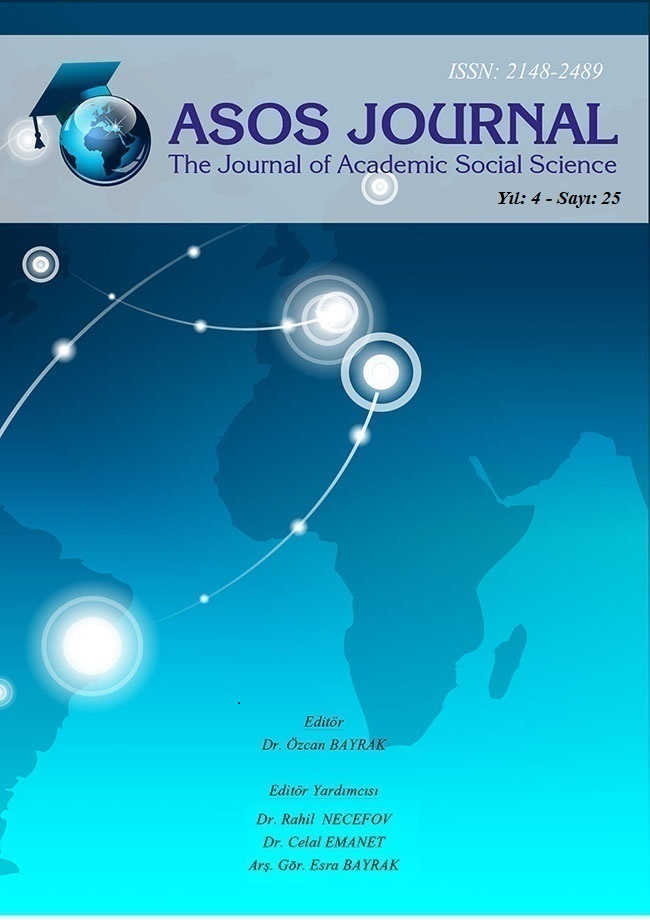Author :
Abstract
Bu çalışmada Muska motifinin kullanıldığı bazı Anadolu geleneksel dokumalarından örnekler verilerek, bu dokumalardaki anlamları, kompozisyon şemalarındaki yeri, dokumalarda yer aldığı biçimleri incelenerek, Anadolu dokumaları içindeki yeri ele alınmaktadır. Geleneksel Anadolu dokumalarında çoğunlukla rastlanılan Muska motifi, sahibini tehlikeli dış faktörlerden korumak için, sihirli ve dini bir güce sahip olduğuna inanılan yazılı bir tılsımdır. Muska Motifi kötü göz, kötü bakış olarak görülen nazar olgusuna karşı kullanılmıştır. Çalışmada, muska motifinin etimolojisi ve anlamı üzerine yapılan incelemeler ışığında, muska motifi kullanılan geleneksel dokuma görselleri üzerinde, bilgisayar ortamında motif çizimleri, kompozisyon içindeki yeri, dokumadaki anlamı da incelenmiştir. Ayrıca dokumalardaki muska motifinin sosyo-kültürel yapı ile etkileşimleri de değerlendirilmiştir.
Keywords
Abstract
In this study, giving some examples of traditional weaving Anatolian motifs used the amulet, the meanings of these weavings, the place of composition schemas, where forms of weaving examining its place in the Anatolian weavings are discussed. Amulet motif often encountered in traditional Anatolian weavings, to protect the owner of the dangerous external factors, is believed to have written the magic and charm of religious power. Amulet motif was used against the phenomenon of evil eyes as seen a bad view. In study, the etymology and meaning in the light of the investigations on the amulet motif, amulet motif used on traditional weaving images, in computer environment motif drawings, location of the composition, also the meaning of weaving investigated. In addition, interactions with the socio-cultural structure of muska amulet evaluated.
